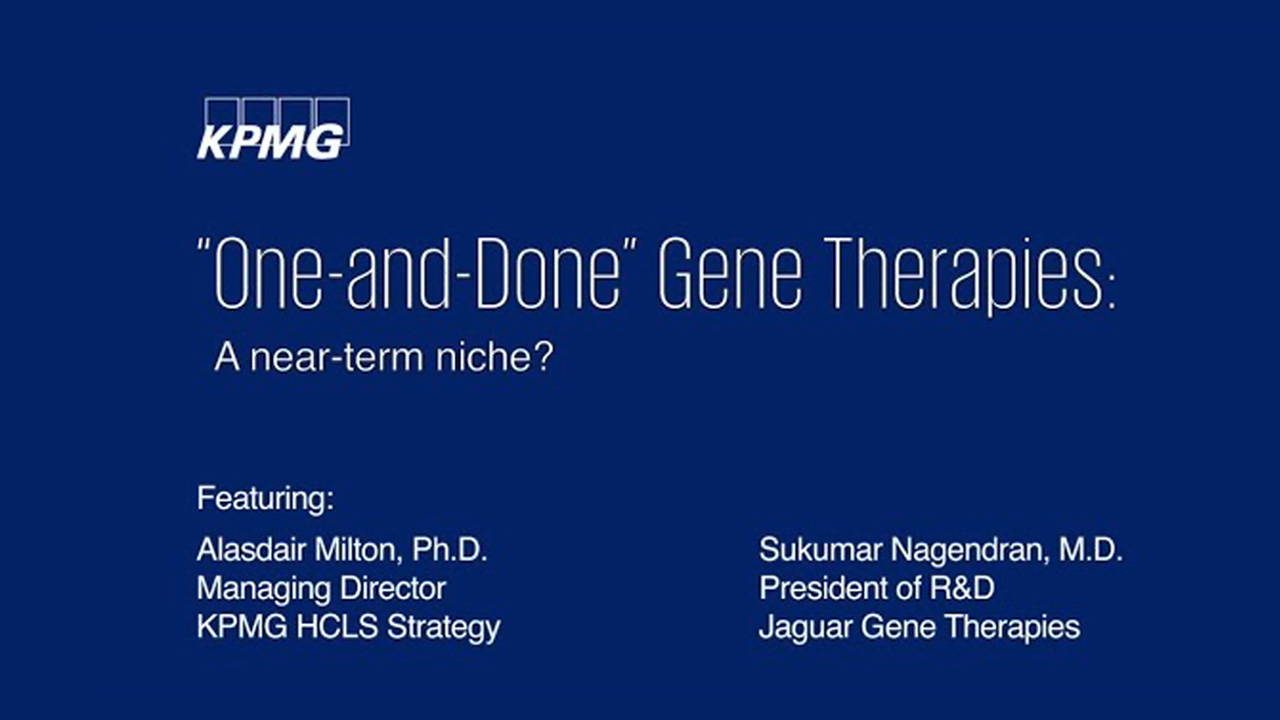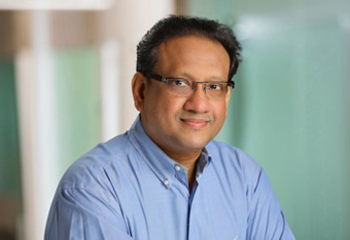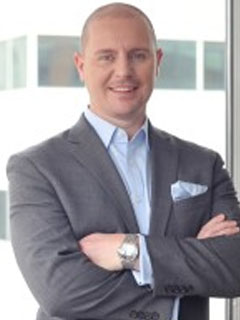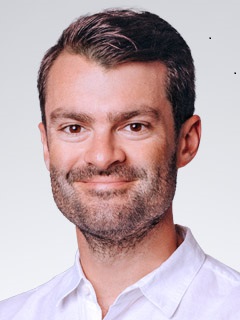Video transcript
Interview transcript with Sukumar Nagendran, M.D., President of R&D at Jaguar Gene Therapy
Alasdair Milton, PhD: Thanks for joining today everyone. It's my pleasure to be speaking with the Dr. Sukumar Nagendran, who is the current president of R and D with Jaguar Gene Therapies and a former chief medical officer at AveXis where he was responsible for the clinical development and assisting with the launch of zolgensma for spinal muscular atrophy. It's one of only two, one-and-done gene therapies that are currently on the market.
Sukumar! Welcome, thank you so much for your time. And just wondered if you could give the folks who are watching this interview a little bit more color to your background. You've been in the industry for a long time and maybe you could get a little bit more perspective on your history as it relates to gene therapy.
Dr. Sukumar Nagendran: Yes, thank you Alasdair. I will say it's a pleasure talking to you today. My background in gene therapy has been over the last six or seven years. I came onboard at AveXis to help to develop zolgensma. At that time, it was called AVXS-101 for a terrible disease called spinal muscular atrophy, where in type 1, almost 95% of these children were ventilator dependent or did not survive beyond 20 months of age. And what I would like to point out is that as a team at AveXis, we were able to develop this gene therapy at rapid pace for a terrible neurodegenerative disorder, which has already shown to be transformative when it comes to manage the disease process, both for symptomatic children with spinal muscular atrophy, as well as pre-symptomatic children. And it has also set the stage, I think from a conceptual standpoint that with gene therapy in many diseases, if treated at the appropriate time point in the disease course, the therapy can actually transform lives and at times maybe even potentially be a cure in the future.
The reason I emphasize this is our experience with AveXis and zolgensma, I think it has been a huge breakthrough for the whole gene therapy field when it comes to- how do you set up strategy? How do you develop a product? How do you pay attention to the manufacturing process and how do you identify diseases where you can optimize your impact? Now, I would also add that before I came to AveXis and started working on gene therapy, I've been in the industry for 21 years, both big pharma, midsize pharma in multiple different roles. All the way from clinical development to medical affairs to commercialization, but I've also been in the diagnostics industry.
I was at Quest Diagnostics running their medical function, medical affairs especially. And that was also a very helpful experience because it actually taught me a lot about newborn screening, developing diagnostics and gene panels for very complex and rare disorders as well, which actually really helped us when it comes to spinal muscular atrophy because Quest Diagnostics did a lot of work and testing in this arena. So in my current role as president R and D and Jaguar Gene therapy, we are very excited to be dealing with some very challenging disorders, which include the autism spectrum disorder, ciliopathies especially Bardet-Biedl syndrome, galactosemia, for which newborn screening currently exists and then type 1 diabetes, which we really feel we could make a difference for this patient population as we develop these products for the future.
Alasdair Milton, PhD: That's great. Thank you so much for the background Sukumar. So, as I mentioned at the start of the interview, you're one of the very few executives who have been involved in the launch of a potentially curative gene therapy. And you and I have talked previously about this dynamic. There's a lot of activity in the industry right now, big pharma looking to enter the field. We've seen some pretty major acquisitions over the last few years. Some companies maybe playing it a little bit more cautious and just spreading their bets a little bit more as they think about what modalities and areas to focus on, but in your experience, and given the fact you've worked at small biotech, you've worked at big pharma, in your perspective, what are the fundamental differences in developing and launching a one-and-done gene therapy? Is it a medical driven launch? Is it more of the traditional biopharma model? Like what are the real differences to be successful?
Dr. Sukumar Nagendran: That is a very important question that you asked me, Alasdair. So let me lay a framework for what I think is a successful model in developing a gene therapy and then successfully launching it to optimize market access and patient access. Because, as we all know, it is one thing to develop a therapeutic, which can change lives, but it's also important that patients have access to it and that they can actually use the therapeutic to change their lives and also help their families as well. So one of the most important things, especially in the world of gene therapy is to pay attention to the preclinical models and the translational nature of the preclinical model to the human. Because, usually if you have the right preclinical model and you have the right construct in the product itself, using the CMC process, the signals that you see in the preclinical model usually tend to transit the human one-to-one. And if it's going to be transformative, then obviously paying attention to what you see in the first-in-human studies sometimes can accelerate your development life cycle. What is also important, I would say, is that when you work in the rare/ultra-rare disease space, especially with gene therapy, you must pay attention to every patient. You cannot ignore and treat these trials as if they are 10,000 patient trials. So the clinical team at these companies have to work really closely with the investigators and manage these patients very closely, especially when it comes to the risk profile, the adverse events that are seen and how they can be managed, especially when it comes to the immune responses and other things that one might be observing with the gene therapy.
This also points to the fact that the route of administration becomes very important because depending on the route of administration, the disease process being treated and furthermore, the age range at which the disease is being intervened at, that all of these drive the point that the medical team has to be actively engaged, not just in the clinical developmental life cycle, but also in the commercialization piece, because once the gene therapy is launched, every patient who gets the gene therapy has to be appropriately responded to and managed including the families when it comes to how these children are doing over time.
And finally, I would point out that these gene therapies that are going to be a one-time therapy, like what I think zolgensma is and maybe others that we develop for the future, you cannot give the therapeutic and then forget about the patients. So both the clinicians taking care of the patients, as well as the sponsor or the company involved have to pay attention to how these children or patients develop over time and how the response continues. And at the present time, the regulators are very interested, not just in the initial treatment response, but also on the durability of the product. So it's very important that regulatory bodies and the companies developing these gene therapies work together in making sure that not only are these gene therapies transformative initially when they are given, but they really change lives over the course of time.
Alasdair Milton, PhD: Yes, so thanks for that. That's really important perspective Sukumar. There's kind of three things that I highlight in the paper that I've written that I think will limit the use of one-and-done gene therapies to rare monogenic diseases. And for the next five to 10 years, the first is the question of delivery, right? So how do you ensure the right amount of therapy gets to the right tissue in a, in a safe way, and effective way? The second is manufacturing role really aware of the challenges of gene therapy, manufacturing and the challenges of scale up going from very small clinical trials to the commercial model. And then the third is cure, right? Which we kind of touched on, about this question of cure. And is it really durable from the long-term? I want to start with those first two and get your perspective. So in the delivery piece and on the manufacturing, what are your perspectives on the challenges and then some of the ways we might be able to get round those issues with one-and-done gene therapy? So we start maybe with delivery and then switch to manufacturing.
Dr. Sukumar Nagendran: Yeah. So, so that's another great question Alasdair, because when it to delivery, I would point out that could turn out to be disease specific. Because route of administration, whether it is systemic I.e. intravenous, whether it is through the IV approach or intrathecal approach, ICM approach to enter the central nervous system, whether it's an approach to get into the eye; intravitreal, suprachoroidal, or subretinal, whether it is to get into the pancreas or the liver. So my point is that a multiple different routes of administration for different specific diseases that could drive the need for specific delivery systems. So as you know, at the present time, the best study delivery vehicle appears to be AAV especially AAV9 serotype, where we have the most experience. But there are also many other deliveries being evaluated, which include lipid nanoparticles and multiple other methods, including making these AAV capsids very organ specific.
So what I would anticipate is over time, as many companies are working on these very specific delivery system, whether they are viral or non-viral, they'll eventually be a pool to patients and the patient populations, because I think scientifically we are getting better and better at understanding how to optimize these delivery systems. Now, the second piece of the puzzle is not just the delivery system, but can you also optimize the gene of interest and the payload that you give for a specific disease? So you might be able to concentrate the product and give more in less. So my point being, you may not need as much vector, but you still can optimize how much gene of interest is given and therefore produce enough of the protein necessary to change the disease course.
The third piece, which most people don't seem to talk about is also disease-specific. In certain diseases, you might need significant expression of the gene given, in others, you might only need 10% expression. I mean, in some cases that may be more than adequate to overcome the disease. So I would say pay attention because there are many companies now evaluating different methodologies when it comes to a delivery systems. And my hope is that over the next five to 10 years as these delivery systems become a lot more sophisticated, they will hopefully become much more impactful, less immunogenic, and frankly, be able to give much larger genes or what I would call partial gene constructs that can actually change the disease course.
Alasdair Milton, PhD: And then, on the manufacturing side, it's a perennial issue, whether you're manufacturing in vivo gene therapies, ex vivo and there is a fragmented supply chain with the raw materials. There's a burgeoning number of biotech companies that are putting demands on CDMOs. I've heard numbers around between 18 months to two years to actually get a CDMO slot. What do we have to do to solve for the manufacturing challenges with gene therapies? Because ultimately if we can solve for that, we can get more of these therapies to patients.
Dr. Sukumar Nagendran: So that's another great question Alasdair. And what I would point out very simply is that a company that's in the gene therapy space to control and have significant impact on their own future, have to figure out manufacturing and control their manufacturing processes. So what I'm getting at is that I think that gene therapy companies ideally need to build their own manufacturing, plants and processes. And I would refer to the AveXis model where my colleague, Andrew Knudten, who is now chief operating officer at Jaguar Gene Therapies, and the head of manufacturing, figured this out very early and played a significant role in the success of AveXis. And that model, I think, is going to be critical because as you pointed out there are many contract manufacturing organizations out there, and as you probably know, they're all consolidating as well, but the slots are getting more limited.
So it will be harder and harder given that there are hundreds and thousands of gene therapy companies being formed for them to really figure out the logistical steps on how to get their product available in time for their trials, but then also eventually to commercialize as well. So this goes back to what I said at the beginning, I think to control your future, you need to figure out manufacturing early, get the best product available and ideally have your own manufacturing plant and process. And frankly, if this is an arena you decide to explore further, I'm happy to introduce you to my colleague, Andrew Knudten, who can talk, I think far better on this topic than I can.
Alasdair Milton, PhD: That's awesome. The question of cure, right? The third piece of the puzzle, if you like. So it's a big question mark, as you alluded to earlier. FDA and other regulators are now looking at the durability of gene therapy, payers are interested in understanding, is this really one-and-done? I actually want to talk about something you mentioned at the start, and you talked about that your time at Quest and it's the newborn screening panel, right? The earlier that we intervene with the gene therapy or with other types of therapy and with these childhood diseases, the better for the patient, the better the outcomes, but we don't have a great approach to newborn screening in the United States. What has to happen here? Is it is a policy change? Is it a technology change where we can perhaps lower the cost of NGS sequencing, even more to make it just routine to screen every child? What has to happen so that we can actually diagnose these genetic diseases much earlier and get these treatments to kids?
Dr. Sukumar Nagendran: Another very important question, Alasdair. I am a strong proponent for newborn screening for as many diseases as possible. And at times maybe even diagnosing these terrible diseases, especially the rare diseases intrauterine. There is a technology called NIPS, noninvasive prenatal screening, that can actually take maternal fetal DNA and identify some of these diseases. And as we all know, understanding the world of gene therapy, the earliest some of these diseases are diagnosed, especially when they are neurodegenerative, the earlier you intervene the much greater the clinical impact for those patients. So yes, the cost of the newborn screening panels, the next gen sequencing has come down significantly, but policy has not kept up with the changes that are going on in the technical space. So the policies that are applied, I think at the federal and state level also have to be seriously looked at where you don't link the need for newborn screening, for a therapeutic to be actually available.
I think newborn screening just has to be there so that not only patients and families are aware of what they are in for, but you can start managing these children early. Because if you talk to advocacy groups and parents of children with these rare and ultra-rare diseases, the diagnostic dilemma and nightmare that they go through before disease IS diagnosed is terrible. I mean, it brings tears to many of our eyes because these patients and parents suffer. So given that many of us are now trying to develop solutions in the gene therapy space, not only does newborn screening have to be made available across the board, but I think at a federal and state policy level, our government officials have to pay serious attention on how to expedite the process.
Now, in conclusion, I will make another strong case with my experience at AveXis. Very simply put in 2015 June, when I met with the investigators who developed the initial gene therapy at Nationwide Children's. It was very impressive to see their animal model, the Delta 7 mouse, when they are given the gene therapy, how all these mice were active and living far beyond what they were expected to.
And in their early clinical dataset, we saw the same signal. And this has now led to data from the pre-symptomatic trial that we designed at AveXis that Novartis concluded called the SPRINT trial, where it's very clear that in these pre-symptomatic children, they appear to continue to developing normally without any symptomology. To me, if that continues, that could potentially be a cure. And this, I think makes a very strong case and endorsement for newborn screening to be paramount for future success of identifying and managing and treating all of these children and patients and helping the families.
Alasdair Milton, PhD: That's great. That are great points.
I want to just talk about the central thrust of the paper that I've written is that, because like I mentioned, these issues of delivery, manufacturing, cure that one-and-done gene therapies are probably going to be limited for the next five or 10 years because of the technical limitations to rare and ultra-monogenic diseases of which there are many. I think that probably makes sense from a scientific perspective, we understand the driver of disease. But with Jaguar, you guys are taking a little bit of a different approach with type 1 diabetes. You mentioned that at the top of the call, I mean, the prevalence of that in the United States, I think is about one and a half million patients now, clearly not having to talk about their proprietary nature of what you're doing, but clearly Jaguar, and I think some other biotech feel like not necessarily a genetic disease, because it's an auto immune disease, that there might be other ways of treating bigger disease populations, but using viral vectors or other approaches. Give me a sense of that.
Dr. Sukumar Nagendran: Your point is well taken that if you use the gene therapy methodology for diseases where it's not a monogenic disorder, and for all I know, it may not even be polygenic disorder, but if you know that target organ and target cell that has to be restored, then one can use gene therapy to make a difference in the disease course and management of the disease. Now I would go a little bit further and say, even in polygenic disorders, there is now some thinking, obviously the proof is in the pudding, but there is now some thinking that in polygenic disorders, you might be able to use the delivery system, but put different genes of interest in that delivery system and help restore some of the functionality for the disease process, such that you can help manage that disease better. But for us to be effective in the polygenic disease field, obviously cost of goods have to come down. And obviously the whole reimbursement arena also has to be evaluated to really encourage sponsors and companies to evaluate those disease processes further as well.
Alasdair Milton, PhD: Yes, absolutely. And then, one thing I want to cover off on is we've talked about the sort of one-and-done gene therapies in this conversation. If I just think of a broader opportunity here, there's what I think of as the nucleic acids technologies. So antisense, oligos, mRNA, RNAi, it seems like every day there's a new startup. I've seen some startups that are looking to optimize AAV capsids using artificial intelligence. We're truly in like one of the most innovative eras in medicine, certainly in the last 20 years. Do you think those modalities can compete with one another? Is it a zero sum game? Can you have an mRNA technology and some other technology that actually treat the same population, or how can these kind of sit together? What's your perspective on the kind of broader nucleic acids therapies and the kind of competitive dynamic there?
Dr. Sukumar Nagendran: So that's another good question, Alasdair. The whole world of gene therapy, gene editing using a modern technology and beyond, I think is going to be a boon for disease management and for patients. So essentially let me simplify this and I hope this doesn't make this too simple, but let's look at the world of glucose management, right? You have so many different mechanistic methodologies now to treat diabetes. And we have from GLP 1 analogs, to sulfonylurea, to Metformin, to insulin, et cetera. I look at the gene therapy world in a very similar vein. What I anticipate is 20 years from now, maybe even 10 to 15 years from now, you'll have gene therapy, the straight giving the gene of interest through a vector or delivery vector. You will have gene editing or targeted gene editing that could enhance management of some diseases.
You may be able to give ASOs for certain diseases or use the mRNA type technologies that are now being used in vaccines, especially to address the COVID epidemic that have shown they can be very useful in certain disease processes. So I guess what I'm getting at is 10 to 15 years from now, I think a patient might have many options to choose from different treatment modalities, but maybe even combine some of these technologies to really further enhance the management of the patient.
So I don't want to speculate too much, but I can anticipate in certain disease states, especially in the CNS space, sometimes combine technologies might really enhance and help patients to be managed quite effectively. So I think it's an exciting time to be involved in this field. And I would also point out that in the work that you and your colleagues do, you all keep track of everything that's going on in the world of biotech and gene therapy. And I think you have to continue educating your audience because it's a very exciting time to be in this space. And I sincerely hope that the Jaguar Gene Therapy group can further contribute to disease management similar to what we were able to do when we were AveXis.
Alasdair Milton, PhD: Absolutely. And then just one last thing before we, we can wrap up is; there's a piece in the paper I've written about staying the course, right? And I think sometimes in biopharma, certainly from an investor perspective, it can get a little bit fickle sometime. And the example I've given the paper is the delivery issues we saw with RNAi back in the early 2000 10, 11, 12 timeframe. And at that time we saw big pharma exit the area because they just didn't think it was really going to be clinically relevant. And yet the companies that stayed in and addressed those delivery challenges are the ones who actually came to market with these really transformative therapies that. I'd love to get your perspective in that idea of just, sometimes I think it's easy for us to draw back from certain modalities or approaches because of one or two bad trials, but really science needs to kind of keep striving and keep pushing on. What's your perspectives on that and the kind of stickability of what we have to do in gene therapy to make this a success?
Dr. Sukumar Nagendran: So one word comes to mind, it's tenacity. You'd never give up. So I can tell you the individuals and companies and sponsors that have succeeded in the world of biotech, especially in gene therapy is they have never given up on their stumble because when they are doing something new and developing new technologies and obviously treating very difficult to treat patients, things don't always work out the way you hope they work. But what you have to do is always to quickly regroup. And remember the patients is number one here. And if you really believe that the technology and therapeutic that you're developing is really going to change lives, keep the focus and keep developing the products. And for example, the AveXis story is, we never gave up. We kept our focus and see what the company has been able to do. And now Novartis is able to do for this patient population.
I look at the DMD space, right? We have many companies in the DMD space. It's a very difficult to treat disease, but none of these companies are giving up their persisting because many of us think that gene therapy will eventually transform lives in the world of DMD. I think just keep going and look at what we're trying to do at Jaguar, right? For example, autism spectrum disorder, another very difficult to treat disease, but we are determined to develop gene therapy in this disease process, because we think we can transform lives there as well.
So I guess this comes back to, Alasdair, you never give up, you keep your focus. You have to work cross-functionally as a team. And especially in small companies, it is very important to have very experienced individuals, keep the teams motivated and focused, and frankly you do need the funding. And I'm very happy and pleased to say that there are many investors out there who really want to invest in these innovative biotech companies, because they believe that these products will change lives. So again, thanks for the opportunity to allow me to talk to you. And I hope we can continue this discussion in the future.
Alasdair Milton, PhD: That's great Sukumar. You and I have spoken a number of times in the past about this area, and it's a passion area for both of us, and hopefully we'll get to continue those conversations in the future. I just want to take this opportunity to thank you once again for your time. I know you're very busy and very best of luck with everything at Jaguar and thanks so much for giving us these frankly amazing perspectives on gene therapy. Thank you very much.
Dr. Sukumar Nagendran: My pleasure Alasdair. All the best.
Alasdair Milton, PhD: You too.











